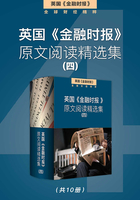
America is still learning how to cope with the demon drink (844 words)
By Philip Delves Broughton
My heart went out this week to Greg Boardman, the vice provost for student affairs at Stanford, the poor man charged with implementing the California university's policy on undergraduate drinking. For all of Stanford's might and achievement at the heart of Silicon Valley, it has suffered in the past few months for the actions of Brock Turner, a former student jailed for six months for sexually assaulting a young woman. Turner, a member of
Stanford's formidable swimming team, was drunk and his victim unconscious. His crime prompted yet another look at binge drinking at American colleges. Stanford has responded by banning hard liquor and Mr Boardman wrote to undergraduates this week explaining the change, asking them to “bring your best selves to this endeavour” and be a part of solving the problem. “We must create a campus community that allows for alcohol to be a part of the social lives of some of our students, but not to define the social and communal lives of all of our students,” he wrote.
His earnest entreaty sits on the website of Stanford's office of alcohol policy and education. Here one can also learn about the Bacchus manoeuvre, which is the method of turning over an unconscious person so they don't choke on their own vomit, and the practice of pregaming, drinking a large amount in a short time before going out for the night. “Although it may initially seem cool, most people visit the ‘porcelain god' an hour or two later,” the university warns.
Stanford's approach to student drinking also includes alcohol-free “cardinal nights” of movies and entertainment intended “to challenge the faulty normative belief that alcohol is needed in order to have fun on a college campus”.
Faulty as it may be, that normative belief is rooted in American culture. With his cardinal nights, Mr Boardman is taking on the force of movies like Animal House, Road Trip and Old School. He is taking on the beer-and-barbecue traditions of tailgating — serving a meal from the back of a car — before college football games. He is challenging fraternity and sorority traditions, and is up against the allure of boozy, spring-break trips to Florida beaches.
These habits have survived a deluge of adverse research and statistics. The National Institutes of Health reports that each year about 1,825 college students die from alcohol-related, unintentional injuries including car crashes. About 97,000 experience alcohol-related sexual assault or date rape.
Much of the drinking is due to social pressures. True to the Animal House stereotype, the students who drink the most are those living in fraternities or sororities. Those who drink the least live with their parents and commute to classes.
Perhaps most damning of all for universities is that alcohol abuse among students is higher than it is for young adults who do not attend college, particularly so for women. Universities seem to make the problem worse.
A few years ago, the journalist Malcolm Gladwell wrote that America's approach to the problems caused by alcohol is to “moralise, medicalise, and legalise” — anything but treat alcohol the way the Italians or French do, as simply as they do food and ordinary socialising. To drink in America is still at some level a vice — at least naughty, at most a trigger for serious, antisocial behaviour. Equally, the decision not to drink comes with a halo.
This has left universities struggling. In 2008, a group of college presidents urged that the drinking age be dropped from 21 to 18. The 21 rule only came into effect nationwide in 1984. It is absurd that Americans can vote, be sent to war and buy a gun before they can buy a beer. But the effort to drop the age limit was rebuffed by a combination of abstinence and law enforcement groups.
Drinking is also a natural partner of the sport culture that has become so commercially important to American universities. You drink before the game and even more after the game. A study of college drinking by the Harvard School of Public Health in 2008 found that cheap, freely available booze correlated with binge drinking. A Saturday night cruise through almost any college town could confirm this.
One strategy that appears to be working is urging parents to warn their children against drinking before arriving on campus. At some colleges, students are told that if they have to be brought home or hospitalised after drinking, their parents will be informed. The fear of being ratted on to the people writing the $50,000 annual tuition cheques is proving powerful.
But the spate of tawdry news about college drinking compounds a strong, negative narrative about American universities as places where young people struggle rather than thrive, where they fall victim to anxiety, debt and the worst kinds of social pressure. Prescription drug abuse has been increasing among students, presumably to cope with the anxiety. And drinking habits are becoming extreme, with more abstainers but more students drinking to excess. Mr Boardman is right that this is a “multiple lens” problem. The answers need to be less blurred.
请根据你所读到的文章内容,完成以下自测题目:
1.Which is not right about Bacchus manoeuvre?
A.turn over an unconscious person
B.choke on drinker's own vomit
C.practice of pregaming
D.drink a large amount in a short time
答案
2.How many college students die from alcohol-related?
A.900
B.1,825
C.2,008
D.5,000
答案
3.In which year that college presidents urged about the drinking age be dropped from 21 to 18?
A.2000
B.2005
C.2008
D.2012
答案
4.Which is not related to young people struggle?
A.fall victim to anxiety
B.academic stress
C.debt
D.worst kinds of social pressure
答案